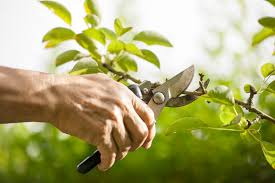Wonderful winter
Keith Mundy
Well here we are well into another winter and the time is right to catch up with many tasks in the garden that need to be done to rejuvenate plants and attend to jobs that we missed during the warmer months.
During this month it is a good time to commence pruning in the rose garden and orchard as most of these plants will now be dormant. Up until now, with the unseasonal warm autumn weather, it has been a bit early to prune with the sap in the plants still running. Pruning roses before they are totally dormant will encourage them to shoot, with these shoots being damaged by frost.
Roses should be pruned reasonably hard, as the more new growth that is encouraged the more blooms will appear in late spring. If you are unsure of the severity of pruning then these few tips will help.
- Initially remove all dead or damaged wood
- Remove any branches that are crossing over another branch or are growing into the centre of the bush. The idea is to keep the centre of the bush open, in a vase shape, to allow for better air circulation. This will decrease the possibility of fungal diseases when the plants come into leaf again in spring.
- Reduce all the other growth by as much as half, remembering to ensure you have live buds below the cut and that the upper most bud is pointing away from the centre of the plant, basically pointing in the direction you want the new growth to point
An important fact to remember when doing your roses is not to prune the bushes that have only one flowering period in spring. These roses flower on the current season’s growth and if pruned in winter there will be no flowers. Pruning of these roses takes place in late spring after they have flowered. This applies to many old fashioned or climbing roses.
The pruning of deciduous fruit trees is a bit more complicated and if you are unsure of the technique I suggest you contact a professional horticulturist for some help. Fruit trees develop fruit buds on different types of wood. It is important to know the difference so you don’t cut off established fruiting spurs, particularly on apples and pears.
Once all the roses and trees have been pruned complete a spray of winter insecticide and fungicide to remove any over-wintering insect pests and fungal problems.
Pruning of hydrangeas should also now take place and a similar method of pruning to roses is recommended. Hydrangeas flower on growth that has been made in spring, on new season wood, so the more that this is encouraged the more flowers you will have.
Now is also a good time to divide and relocate summer flowering bulbs like dahlia and other herbaceous perennials. Divide them with a sharpened spade and dust with a fungicide to prevent any damage to the cut. Plant them in the new position with a combination of cow manure and a handful of blood and bone to the existing soil. Remember that most herbaceous perennials like a well-drained soil, so slightly raised garden beds in full sun are the ideal.
Keep an eye out in nurseries for winter flowering perennials. Hellebores, salvia, agastache and many others are now available. These will add a bit of colour to what can be a drab period of the year of our gardens.
Still on the theme of pruning it should be well remembered that not every flowering tree or shrub in the garden needs to be pruned in winter. I have seen many spring flowering plants heavily pruned in winter and then no blossom appear in spring. Spring flowering trees and shrubs develop their flowering buds in late summer and autumn and if these plants require pruning, do it in late spring after flowering. They then have all the following seasons to develop new flowering wood.
Remember to ensure all your pruning tools are well sharpened and clean before you start. Cleaning the cutting tools between plants with a diluted Detol or similar will decrease the spread of infection from one plant to another.
Happy winter gardening


